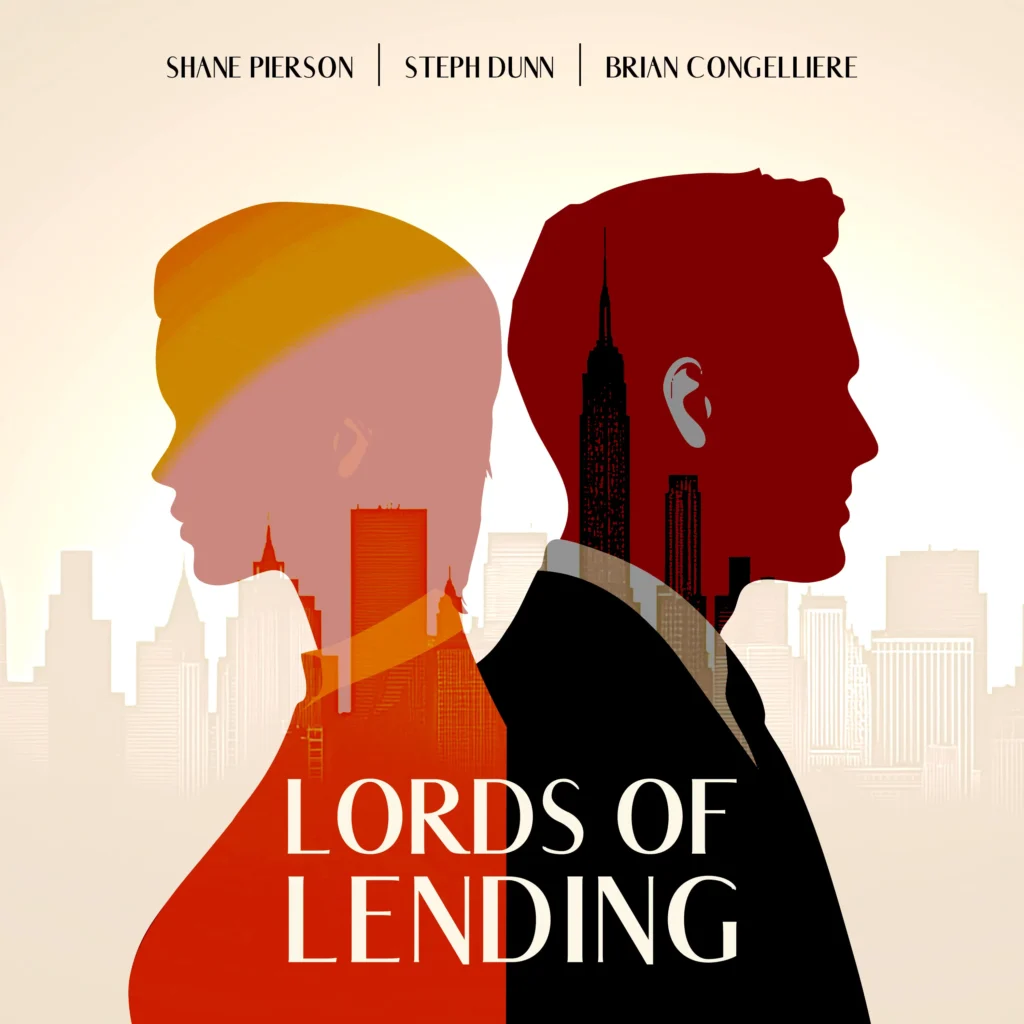
SHANE PIERSON
Purveyor of Honest Capital
When the Numbers Don’t Work Anymore
There’s a moment in almost every struggling business where the owner stops hoping and starts surviving. The energy that launched the thing is gone. The spreadsheet doesn’t lie anymore. The loan payment is due on the first, payroll’s coming, and you’re staring down a balance sheet that doesn’t care how many hours you worked last week.
This is the part no one talks about when they’re pitching the dream of entrepreneurship. The reality that debt is still debt, even when it’s SBA-backed. Even when the lender believed in you. Even when you did everything right and the business still went sideways.
On Reddit, you’ll find posts that feel more like distress calls than questions. A BBQ restaurant owner with $140,000 in loan debt and no way to make the numbers work. A food truck operator trying to keep up with daily expenses while the loan balance never seems to shrink. These aren’t abstract stories. They’re real operators with names, stress ulcers, and exhausted credit lines. They’re not looking for a pep talk. They’re looking for options.
And they’re not alone.
Every month, business owners land in that same spot, quietly. No headline. No chapter in a business book. Just the growing weight of a loan that once felt like the key to growth and now feels like an anchor.
This section isn’t about shame. It’s about facing the facts. If your business can’t make the loan payments anymore, you need to know exactly what’s at stake and what your next moves need to be.
What Really Happens If You Can’t Pay Your Business Loan
Let’s be honest about what defaulting on a business loan means. It’s not just a missed payment. It’s not something that quietly resolves itself. It’s a chain reaction that starts with late fees and ends with a serious conversation about what you personally owe.
If your loan is SBA-backed, the lender will still come to you first. The SBA guarantee protects the lender, not you. So when your business stops paying, they’re coming after the person who signed the personal guarantee. That’s usually you.
And that personal guarantee? It’s not symbolic. If you pledged your house, your car, your savings, or anything else with real value, it’s all now on the table. If your business doesn’t have the cash to cover the loan, the lender can go after those assets to recover their money. People are often shocked to learn how far that responsibility reaches. But it’s written in every SBA loan document. It’s not hidden. It’s just that most people don’t really believe it until they’re living it.
So what happens next?
Most lenders don’t want to force a foreclosure. They don’t want to drag you into court. But they also aren’t going to ignore the default. If you’re struggling to make payments and you go silent, you remove their ability to work with you.
But if you reach out early and come to the table with a plan, there’s a chance they’ll consider options like temporary interest-only periods, payment restructuring, or even short-term forbearance while you regroup. These aren’t guaranteed, and they depend entirely on your communication, your financials, and your attitude. But they do happen.
The worst thing you can do is avoid the conversation. That’s what turns a manageable problem into a legal nightmare. Missed payments with no explanation lead to default letters. Default letters turn into collections. Collections turn into legal judgments. And now the problem is no longer just your business. It’s personal.
This doesn’t mean you’re doomed. But it does mean you need to stop hoping and start planning. The sooner you engage, the more tools are still on the table.
If you’re behind on payments, explore options like an SBA Offer in Compromise and consider working with tax advisors from Block Advisors who specialize in SMB relief plans.
Practical Ways to Restructure, Refinance, or Reduce the Pressure
If you’re drowning in loan debt, the first step is facing it. The second step is building a real strategy around it. Not every lender will restructure your loan, but many will at least listen. And if the alternative is default, they may be willing to bend more than you think.
Start by pulling your full debt picture. List every loan, credit line, lease, and obligation your business is carrying. Then break them down: interest rate, monthly payment, remaining term, and whether they’re personally guaranteed. You can’t make smart decisions if you don’t know the whole layout.
If you have multiple high-interest loans or merchant cash advances, your first play might be debt consolidation. Some online lenders and a few traditional banks offer refinance packages that stretch out your term or roll several short-term debts into one longer-term loan with a more manageable monthly payment. You’re not eliminating debt here, but you are giving yourself some breathing room.
The SBA has a refinance option too, but it’s not a quick fix. To qualify, your business needs to show stable cash flow, and you’ll go through a full underwriting process like any new loan. Still, if you have older debts from startup capital or credit cards that you used to keep the doors open, refinancing into a longer SBA term could lower your monthly burden significantly.
Another route is negotiating directly with your lenders. Many will consider temporary interest-only periods or a deferral if you can demonstrate a plan to recover. You’ll need to show real numbers and a clear reason why they should believe things will improve. They won’t just hand you time because you asked. They’ll want to see the logic behind it.
If your lender won’t budge, look at your operations. Where is the money going? What subscriptions, vendors, or services can you pause or cut outright? Can you raise prices without losing volume? Can you change hours, renegotiate a lease, or shift to a leaner offering?
The hardest part of this phase is letting go of what you thought your business was going to be. The vision may have to change so the business can survive. And that’s not failure. That’s adaptation. The entrepreneurs who make it out of heavy debt aren’t the ones who try to preserve every detail of the original plan. They’re the ones who move fast and cut deep when survival is on the line.
Responsible short-term lenders like Fundbox and OnDeck may offer refinancing options with weekly payments instead of daily draws.
When It’s Time to Consider an SBA Offer in Compromise or Bankruptcy
There’s a point where restructuring and cost-cutting aren’t enough. When cash flow won’t cover debt service, customers are leaving, and the business is circling the drain, you have to ask the hard question: Is it time to shut this down?
It’s not defeatist to ask that. It’s responsible. And if you’re carrying SBA debt, it’s even more important to understand what options exist when things go south.
If the business is closing or has already closed, and there’s no way to repay the SBA loan in full, you might be eligible to submit what’s called an Offer in Compromise. This is a formal request to the SBA to settle the debt for less than what you owe. It’s not a loophole. It’s not fast. And it’s definitely not easy. But if you’ve personally guaranteed a loan and you’re facing default, this process can help you avoid full legal judgment or bankruptcy.
To even be considered, you’ll have to show that the business has been liquidated, that there’s no reasonable expectation of repayment, and that the amount you’re offering is the best they’ll likely recover. You’ll need to submit personal financials, explain your situation, and work with the lender as they package the file for SBA review.
Sometimes, owners turn to bankruptcy as a last resort. This can be a way to stop collections, protect personal assets (depending on the chapter and state laws), and formally discharge unpayable debts. But it comes with long-term credit damage, emotional weight, and potential complications if your assets are deeply entangled with your business. Before considering bankruptcy, it’s worth talking to a business bankruptcy attorney who understands both personal and commercial exposure under SBA guarantees.
There’s no shame in walking away from a business that can’t survive. The damage comes from avoiding the reality and letting things collapse in silence. The longer you wait, the fewer options you’ll have. But if you act with clarity and start the hard conversations early, you give yourself a shot at emerging with your integrity intact and a path forward.
Turning the Ship Around – Rebuilding from the Bottom
Some businesses don’t need to shut down. They need to get honest, get lean, and get moving. If you’re not past the point of no return, and you still have revenue coming in, then this might be your shot to rebuild, not with optimism, but with precision.
The first move is to separate emotion from data. You may love the product, the brand, the vision. But the only question that matters now is: can this business generate enough profit to service its debt and operate sustainably? Not gross revenue. Not social media engagement. Cash flow.
Sometimes the path forward is in a complete reset. Owners pivot their offering, narrow their customer base, or drop entire service lines that were never profitable. Others change pricing, renegotiate supplier terms, or even move locations to lower their overhead. Nothing is off-limits if it gives you a chance to breathe again.
In some cases, bringing in a partner can help, someone with operational experience, fresh capital, or a skill set you don’t have. That decision shouldn’t be about giving up control just to survive, but about creating a structure that actually works.
One thing you have to accept is that no lender, mentor, or consultant will fix it for you. They can help, but this part is yours. You’re the one in the trenches. You know the problems. You also know where you’ve been avoiding the hard decisions.
This rebuild isn’t about getting back to where you were. It’s about moving forward from where you are now, even if the business looks completely different on the other side.
And if you manage to turn it around? You’ll never run your business the same way again. You’ll operate leaner. You’ll watch debt closer. You’ll know what real risk feels like. That’s not failure. That’s scar tissue. And it has a funny way of making your next move stronger than your first.
For better cash flow visibility and leaner ops, get real-time insights using Xero or QuickBooks Online.
Additional Reading:
Business Loans with Bad Credit: What You Need to Know — “What happens when bad credit + loans collide?”
Why Startups Get Denied Loans—and What to Do Instead — many distressed borrowers started with underfunded or poorly structured startups.
Broke or Billionaire by 2030 | LoL #5 — “Don’t become the 2030 cautionary tale—here’s how to adapt now.”

